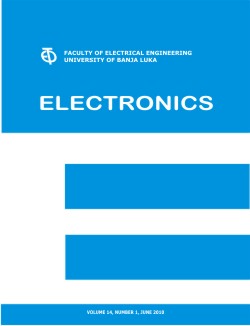Joint Effect of Heterogeneous Intrinsic Noise Sources on Instability of MEMS Resonators
DOI:
https://doi.org/10.7251/ELS1519059JAbstract
This article's focus is on the numerical estimation of the overall instability of microelectromechanical-system-based (MEMS) resonators, caused by intrinsic noise mechanisms that are different in nature (electrical, mechanical or chemical). Heterogeneous intrinsic noise sources in MEMS resonators that have been addressed here are Johnson–Nyquist noise, 1/f noise, noise caused by temperature fluctuations and adsorptiondesorption induced noise. Their models are given first (based on analytical modeling or based on empirical expressions with experimentally obtained parameters). Then it is shown how each one contributes to the phase noise, a unique figure of merit of resonators instability. Material dependent constants and knee position in noise spectrum, needed for empirical formulae referring to 1/f noise, have been obtained experimentally, by measurements of noise of MEMS components produced in the Centre of Microelectronic Technologies of the Institute of Chemistry, Technology and Metallurgy in Belgrade. According to these measurements, varies in the range from 0.776.10-4 to 2.26.10-4 and cut off frequency for 1/f noise varies from 147 Hz to 1 kHz. The determined values are then used for the modeling of micro-resonator phase noise with electrical origin and overall phase noise of a micro-resonator. Numerical example for calculation of overall phase noise is given for a micro-cantilever, produced by the same technology as measured components. The outlined noise analysis can be easily extended and applied to noise analysis of MEMS resonator of an arbitrary shape.

